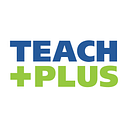To build empathy, even our littlest students need relevant literature
By Emily Sturt
I chose Patrice Karst’s The Invisible String for 5-year-old Alex, whose father died a year ago. After reading the book, which talks about the invisible connections between loved ones, Alex said, “Ms. Emily, my dad is in heaven.” I knew this was the language the family was using, and when he learned that I, too, had someone who died, he said: “You have someone in heaven too? I thought it was just me.” The book helped to open up a conversation for my entire preschool class on a challenging, nuanced subject.
The transformative power of literature in education is undeniable. Like so many other books I use in my classroom, The Invisible String was a catalyst in fostering connections and understanding among my students for whom literature helps to make meaning of their own experiences and the diverse world around them. For teachers like me, books create ways to invite those challenging conversations into my classroom. But not all of our youngest students are exposed to this multicultural, multi-faceted literacy mindset that builds empathy. Here are several ways to ensure that every preschool student is exposed to the relevant literature they deserve.
Educators must use developmentally appropriate literature that aligns with our state standards, allowing children like Alex to explore their natural curiosities, while still honoring their family beliefs and culture. A 2023 study found that only less than half of children under 5 are read to daily by a parent or family member, and 61% of children in low-income families lack books in their home. Relevant literature needs to be a staple in classrooms in order to combat unequal exposure to literature at home. Through their experiences with books, even very young children learn that pictures and symbols can be interpreted, develop vocabulary, and become familiar with print concepts. Being read a story aloud or looking at the pictures and words on a page provides crucial pre-reading exposure. Students learn that text is meaningful, and can begin to identify story- related problems and solutions. Books with alliteration provide detailed exposure to beginning sounds, and rhyming books build foundations in rhyming and sight words. Discussing a story or answering questions about a book begins to build young learners’ reading comprehension skills.
In addition, our preschool students need to see themselves represented in books at school. Research shows that children’s comprehension improves when they read books whose characters, places, and events align with their own cultural and experiential backgrounds. In my own practice, I’ve noticed that when I use books my students can relate to, they become more successful learners.
In my preschool classroom, students from low-income households, those with disabilities, students in foster care, and students from various ethnic backgrounds are trying to understand the world around them. The right book starts a conversation and provides my students with an example in which they can relate. When Kayla was wondering why Ashley uses a sensory chew all day, we read Douglas, You Need Glasses by Ged Adamson, and discussed the wide variety of accommodation materials used throughout our community. When Micah asked, “Why is Penny’s skin different from mine?” we read The Colors of Us by Karen Katz, a book that describes skin colors as so much more than black and white. We then mixed paint colors to find exactly what our skin tones were (I’m peach oatmeal).
To ensure preschool students receive an education that focuses on all parts of their world, all teacher-preparation programs must focus on how teachers select, obtain, and use relevant literature for instructional purposes to enhance learning and connect it to children’s home life. Literature that fosters partnerships and connections with families is a key part of my teaching practice and one that helps my students thrive in an interconnected world. Modules on the significance of culturally relevant materials and guidance on facilitating discussions around diverse themes should also be part of teacher preparation and training. Professional development opportunities and collaborative planning sessions at the school and district levels can further equip teachers to seamlessly integrate inclusivity into their teaching practices. Initial training, as well as ongoing professional development, should equip teachers with resources to foster intentional partnerships with families to ensure accurate and collaborative classroom connections.
Like Alex, all children need the freedom to understand that they are not alone in their struggles, culture, disability, neurodiversity, and the other aspects of ourselves that make us both unique and connected. Our students deserve access to books that help them understand their place in the world, and teachers deserve training to provide this in a relevant and developmentally appropriate manner.
Emily Sturt teaches Inclusive Early Childhood Special Education at Widefield North Preschool in Colorado Springs, Colorado. She is a 2023–2024 Teach Plus Colorado Policy Fellow.
